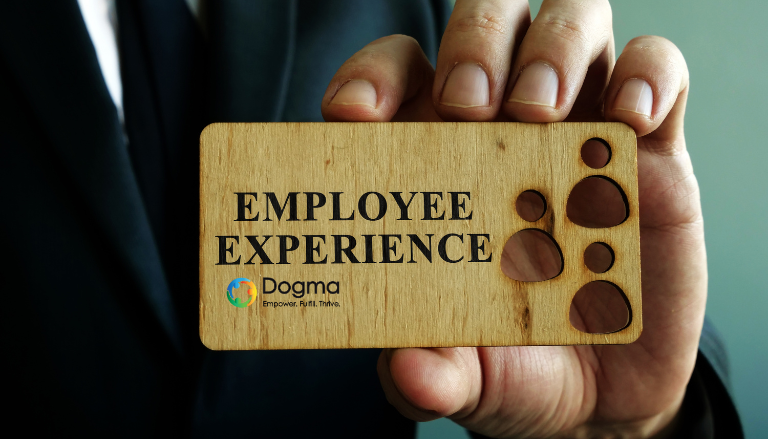Did you know that innovation depends on intellectual honesty?
In a world where companies constantly seek reinvention, teams not only need a safe space to express themselves but also the courage and discipline to debate openly. The challenge lies in balancing these two elements without losing cohesion or motivation.
Psychological safety: necessary but not enough
Psychological safety means creating an environment where employees feel accepted, heard, and free to express mistakes or concerns without fear of punishment.
This factor is essential for learning and building trust within teams. However, recent studies show that psychological safety alone is not enough for true innovation to flourish. Teams may feel comfortable speaking up, but without critical thinking and honesty, discussions can become superficial, and innovation may stagnate.
Psychological safety encourages participation, but it must be paired with intellectual honesty to achieve real Employee experience innovation. When employees feel both safe and challenged, they are more likely to contribute ideas that can transform processes, products, and services. Organizations that focus solely on safety may inadvertently encourage conformity, while those that prioritize criticism without safety risk disengagement and high turnover.
The role of intellectual honesty in innovation
This is where “intellectual honesty” comes into play: the ability to express ideas and disagreements rationally, constructively, and respectfully.
It is this type of honesty that enables teams to harness collective knowledge and drive disruptive innovation. Without it, conversations remain superficial and decision-making loses quality. Teams may avoid difficult conversations or fail to question assumptions, which can limit creativity and prevent meaningful breakthroughs.
Intellectual honesty also encourages teams to examine their own biases, assumptions, and blind spots. Leaders and team members who model this behavior create an environment where truth is valued over comfort, which directly supports Employee experience innovation.
When intellectual honesty is combined with psychological safety, employees can discuss failure openly, propose bold ideas, and iterate quickly. For example, during product development cycles, teams that can critique prototypes without fear of judgment often produce solutions that are more innovative and market-ready.
The tension between both factors
- Too much psychological safety: encourages harmony but can limit genuine critique and lead to conformity.
- Brutal honesty without empathy: like Steve Jobs’ approach at times, may drive fast results but can damage motivation and mutual respect.
The true challenge is finding a balance between the two—fostering productive debates, agile decisions, and stronger strategies. Achieving this balance is crucial for driving Employee experience innovation, as it ensures teams are not only motivated but also empowered to contribute their best ideas.
How teams can cultivate this balance
- Structured debate sessions: Encourage team discussions with clear rules for respectful disagreement. This ensures every idea is evaluated critically without fear.
- Anonymous feedback channels: Combining psychological safety with intellectual honesty allows employees to share concerns or innovative ideas that might be difficult to voice openly.
- Leader modeling: Leaders should demonstrate both honesty and empathy. When employees see leaders balancing critique with respect, they are more likely to emulate the same behavior.
- Regular reflection: Teams should routinely reflect on decisions, successes, and failures. Honest post-mortems can uncover insights that drive innovation.
- Training and workshops: Regular sessions on communication, conflict resolution, and constructive feedback enhance team members’ ability to be intellectually honest while remaining empathetic.
- Cross-functional collaboration: Bringing diverse teams together can spark creative problem-solving, but only if psychological safety and intellectual honesty are present to manage differing viewpoints.
By intentionally applying these practices, organizations can foster Employee experience innovation while maintaining trust and cohesion.
Impact on strategy, employees, and customers
- Strategy execution: Teams that debate openly identify risks and opportunities faster, allowing organizations to adapt and innovate more quickly. Open discussions highlight potential pitfalls and ensure better decision-making.
- Employee Experience (EX): An environment that balances safety and honesty boosts motivation, creativity, and engagement. Employees feel valued and understood, increasing their willingness to contribute innovative ideas. Strong EX fosters retention and attracts top talent, making it a key competitive advantage.
- Customer Experience (CX): A culture of open debate leads to better products and services, resulting in greater satisfaction and loyalty. Companies that excel in Employee experience innovation often see a direct correlation with improved customer experiences because employees are more empowered to design solutions that truly meet customer needs.
Real-world examples of balance in action
Companies like Pixar and Google are known for combining psychological safety with intellectual honesty. At Pixar, story meetings allow every team member to critique openly, but within a culture of trust and respect. Similarly, Google’s Project Aristotle research shows that high-performing teams are those where members feel safe to speak but are also committed to truth and constructive challenge.
Another example comes from Toyota’s innovation culture. Employees are encouraged to identify inefficiencies and challenge assumptions, yet all discussions are framed respectfully. This combination of safety and intellectual honesty has led to continuous improvements in both production and product development, demonstrating how Employee experience innovation drives tangible business results.
Innovation in remote and hybrid teams
With the rise of remote and hybrid work, balancing psychological safety and intellectual honesty becomes even more critical. Virtual teams may struggle with miscommunication, lack of visibility, and decreased engagement. Leaders need to create structured channels for feedback, encourage open discussions in virtual meetings, and ensure that all voices are heard. By prioritizing both safety and honesty, even distributed teams can achieve Employee experience innovation, delivering creative solutions and maintaining high engagement.
Measuring success
Organizations can track the impact of balancing psychological safety and intellectual honesty through:
- Employee surveys measuring trust, engagement, and willingness to speak up.
- Innovation metrics, such as the number of new ideas proposed, piloted, or implemented.
- Customer feedback reflecting improvements in products and services.
These insights allow leaders to continuously refine practices, ensuring ongoing progress in Employee experience innovation.
Integrating GBP for business growth
Promoting your organization’s culture and innovations through Google Business Profile (GBP) allows potential clients and employees to see your commitment to innovation and transparency. Sharing examples of how your teams embrace open debate and intellectual honesty on GBP can enhance your credibility, attract top talent, and build stronger customer relationships.
Contact Us
If you want to learn how your organization can enhance Employee experience innovation and drive meaningful change, contact Dogma Systems today. Our experts can help you build a culture of psychological safety, intellectual honesty, and continuous innovation. Connect with us through our Google Business Profile (GBP) or visit our website to get started.
Conclusion: Why balance matters
The future of work requires teams that can think critically, challenge assumptions, and innovate continuously. By combining psychological safety with intellectual honesty, organizations can achieve a culture where employees feel heard, empowered, and motivated to create meaningful change. This approach not only strengthens Employee experience innovation but also ensures that businesses remain adaptable, resilient, and customer-focused in an ever-evolving market.




